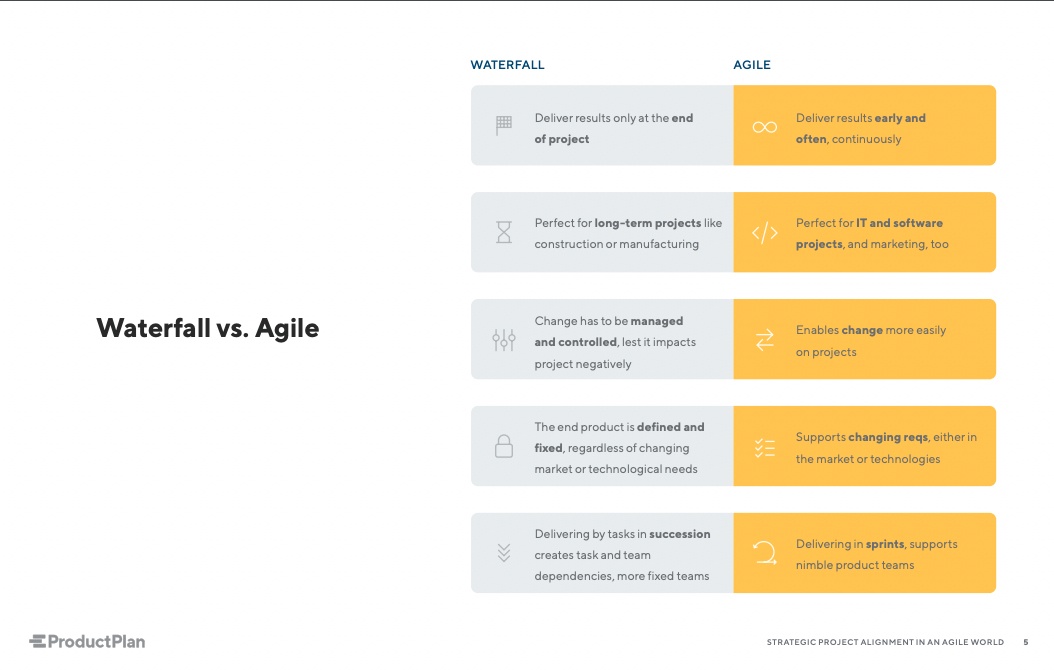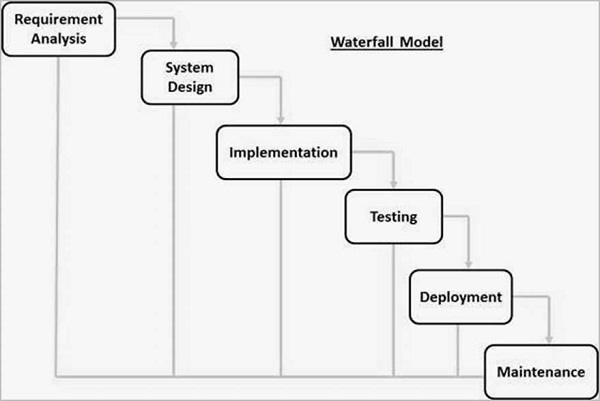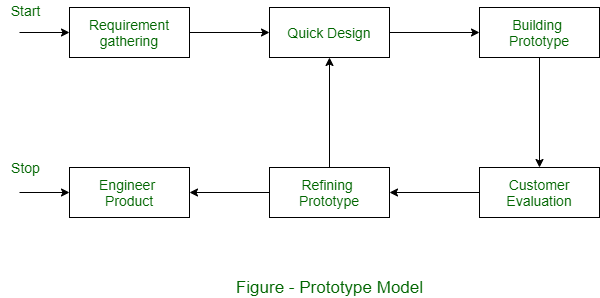Waterfall is a software development methodology that follows a linear and sequential approach. It consists of a series of distinct phases, each of which focuses on a specific aspect of the project. The first phase is the planning phase, in which the project scope, objectives, and resources are defined. This is followed by the analysis phase, in which the requirements of the project are gathered and analyzed. The design phase involves the creation of detailed specifications for the system. The implementation phase involves the actual development of the system, and the testing phase involves the validation of the system to ensure that it meets the specified requirements. Finally, the maintenance phase involves ongoing support and improvement of the system.
There are several advantages to using the waterfall methodology. One of the main advantages is that it allows for clear and concise communication among team members, as each phase has well-defined deliverables and goals. This helps to reduce confusion and ensure that all team members are working towards the same objectives. Waterfall also allows for easy tracking of progress, as each phase has a clear end point and the next phase cannot begin until the current one is complete. This helps to ensure that the project stays on track and meets its deadlines.
However, there are also several disadvantages to using the waterfall methodology. One of the main disadvantages is that it does not allow for much flexibility in the development process. Once a phase is complete, it is difficult to go back and make changes to the system. This can lead to problems if the requirements of the project change during the development process, as it may be necessary to start over from the beginning. Waterfall also assumes that the requirements of the project can be gathered and understood at the beginning of the project, which is not always the case. This can lead to problems if the requirements are not fully understood or if they change during the development process.
In conclusion, the waterfall methodology has both advantages and disadvantages. It allows for clear communication and progress tracking, but it is inflexible and may not be suitable for projects with changing requirements. It is important to carefully consider the specific needs of a project before deciding which development methodology is the best fit.
Waterfall
.jpg)
The Why Agile Is Used More Often? You can try to apply the charts for any project, not only for software development. The waterfall model is one of the most important models used in project management in order to deliver projects on time and in a seamless manner. The division of the model into several phases means that each part is easy to grasp, process and manage. It also refers to a sequential product life cycle model. If an error occurs on a certain stage, it is removed instantly, and the problem gets resolved. Focusing on the end would become a second priority. Furthermore, it plans high-level technical details of the project.
Advantages of Waterfall Model and its Disadvantages

It enables efficient and innovative product creation, with the highest possible quality for the customer, due to the iterative and incremental control process. Can the client really see what is being shown as the focus is on the final product. It may not be suitable for every task or industry, but it also sets the stage to ensure completed work transfers to each step instead of relying on impartial results. Maintenance stage: Enhance the product with better versions maintenance is done to deliver the changes in the client place. Understanding what these two approaches are and how they differ is important for anyone involved in product development, organizational change, program management, or almost any other kind of structured project.
6 Advantages and Disadvantages of the Waterfall Model

Once the initial structure for a project is in place, the waterfall model is lucid and simple and can easily be understood by everyone involved. It was introduced in 1970 by Winston Royce. Due to the clarity of all the stages, the Waterfall is easy to use and manage. To function smoothly, the waterfall model uses the output from one phase as the input for the next phase. The focus of the waterfall model is always on the final goal.
Advantages & Disadvantages of Waterfall SDLC Model

Whilst Agile methods of project management have been on the rise over recent years, Waterfall has still retained some of its loyal followers. Analysis: Once the information is gathered, in the next step start analyzing the available information. When you can build in some flexibility into each step, then this methodology becomes a lot easier to manage. The post-integration is done to find any faults and failures. The development team works on coding the design, taking the design models the design documents as a reference and ensuring that their solution follows the design finalized by the architect. Implementation phase involves the work of project managers and contractors.
What is Waterfall Model in SDLC? Advantages and Disadvantages

So the tasking is easy in this SDLC model. Waterfall completes the development phases only once which complicates the system in the presence of an error. The system design is prepared accordingly. The output of the first phase helps to define the specifications of the software. If an unexpected roadblock occurs, some teams might find themselves back at the starting point once again, creating an even more significant time deficit to manage. It is a system that has been in use for centuries, as a logical almost organic foundation for projects such as construction and manufacturing. Despite scrum, which divides the project into different individual sprints, the Waterfall focuses only on the end goal.
Agile Methodology vs Waterfall Model: Pros and Cons

This means that projects which have conflicts of opinion can always fall back on the stability of the waterfall model to guide you through potentially tricky phases of project management. Too much flexibility can lead to anarchy. The Waterfall model is a useful and predictable system if the requirements are clear, static, and well-documented. The process works in a linear sequential flow in which the phase of the process starts when the previous phase completes the process first. Waterfall is particularly useful for large, complex projects with very specific and unchanging requirements. In case any phase returns an unsatisfactory product, i. Moreover, there are other factors that need to be considered while selecting between the two methodologies.
What are advantages and disadvantages of waterfall model?

Developers implement all models, business logic, and service integrations that were specified in the previous phase. Both methodologies have their advantages and disadvantages. The Agile Scrum methodology has an advantage over all the limitations of the Waterfall model. In this world, there are still large projects with stage gates and overall project plans, but the work is chunked up into Sprints that have a specific scope and timeline. Returning to a previous phase to make alterations is extremely difficult. Using a Does an Organization Have to Choose One or the Other? Easy to execute Project management is easy because each phase is sequential and visible outputs at each stage. If any error or hindrance occurs, then they must be repaired immediately.

.jpg)







